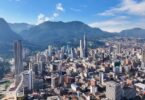We’d been in Japan for nearly a week when my husband looked up from his phone, mid-trip planning. “The problem with Japan,” he said, “Is that there’s no real consensus on where to visit. The cities surrounding Tokyo all get positive reviews. But Kyoto is the only place travelers say you have to go.”
There’s a reason Kyoto is the new darling of Instagram, and America’s new trendy destination. Snagging cheap international flights to Kyoto is a dream come true for a lot of travelers. Home to 17 UNESCO world heritage sites, it does the perfect job of embracing modern civilization while preserving long-valued tradition. It gives you the mountains and the city. You get all of the best food without the hassle of millions of others vying for the same spot at the table. It’s old-world tourism with a local feel is something that city-weary visitors, tired of the flashy lights and busy sidewalks, seek during leisure travel. It’s travel with a soul, and the things to do and see in Kyoto may just take your breath away.
It’s Relatively Quiet

In a world hungry for the next big thing, Kyoto isn’t loud or assuming. It has a natural beauty commonly found in Japan, with a city infrastructure that generally enhances rather than detracts from the landscape. It has all of the modern conveniences travelers want and even seek out when traveling, with a rail and bus system, plentiful taxis, and shopping. But it doesn’t have the siren-wailing, trash accumulating big-city feel. I’ve heard that during peak travel times, the streets bustle and the restaurants are full. But since we visited during the off-season, we found none of that. Compared to Tokyo, Beijing, and Singapore — the other stops on our two-week trip, it was almost peaceful.
It’s Easy (and Enjoyable!) to Get Around

Due to its popularity, there’s no shortage of cheap international flights to Kyoto, and once you get there, getting around is just such a pleasure. Directly behind our hotel raced the Kamo River, where we took electric bikes to various sites. For a large majority of our trip, we rode on the well-maintained riverbanks, eventually exiting to bike along the roads to our destination. Not since Amsterdam have I found a city so easy to navigate from a bicycle. If biking isn’t your speed, the local bus and rail system are easy to manage. We paid 200 yen each for most one-way bus rides, equivalent to about $2 USD. We also walked all over the city, particularly enjoying our strolls along the river. At night, restaurants light up the river and families and tourists make their way home or into the downtown area. Painters set up along the banks, giving it a Parisian feel. Contrast this experience with that of me wedging myself like a sardine into a Tokyo station train car and I can see why Kyoto tourism is on the rise.
The Scenery is Stunning

During early April, the city is awash in millennial pink as cherry blossoms spill along the river and throughout the city. The fall foliage is almost equally impressive, with Japanese maples bursting into vibrant color during November and December. We visited during the spring after the Sakura season, but I wasn’t complaining, either. Everything was green and luscious in mid-May. The walkways, bike paths, and even parts of downtown, with landscaping that’s been carefully executed, were awash in floral and greens. The weather was a perfect 75 degrees for most of the trip.
It’s a Historical Gold Mine

If it’s Japanese history you seek, Kyoto is your place. There are over 1,600 temples in Kyoto, and many of them are open to the public for visitors. Twelve of these temples are UNESCO World Heritage Sites. There’s also three Shinto shrines and one historic castle. Since Kyoto housed the imperial family until the headquarters moved to Tokyo in 1869, the city still maintains a sense of pride as being the center of Japanese life for nearly a thousand years. And when you visit the imperial palace, you get a glimpse into the way the Japanese lived hundreds of years ago. If you are a true history buff, I recommend hiring a guide or at least reading about the symbolism behind the many shrine symbols before you visit. Our Swiss guide, Margaux, was extremely helpful, particularly at the Fushimi Inari Shrine. I wouldn’t have understood what the locals were doing at the shrine, and especially the history and symbolism of the Torii gates.
The Food

I consider myself first and foremost to be a food tourist. Sometimes when you venture from the capital or main city the food lacks. But, after Tokyo and Paris, Kyoto is the city with the third most Michelin stars in the world. Its food scene lacks nothing — even for budget diners like myself. We used food forums, asked locals, and our concierge for local favorites. Here are some of the best things we tried:
- Ramen – The noodle dish is hot in the United States, but no surprise that Japan has us beat. We went to the popular Ichiran, where you order from a vending machine and pass through a narrow corridor until a seat opens up and your food is delivered. The experience alone was interesting — something I always look for in addition to good food.
- Katsu – Also called tonkatsu, this meal was one to remember. It took us nearly 40 minutes to find the restaurant in a back alley, but it was worth it. Before our food came, we were given a pestle and mortar filled with sesame seeds. We crushed our own seeds, then added what tasted like a ginger-infused barbecue sauce. Next, we dipped the pork katsu in the sauce, eating it with rice, shredded cabbage, and miso soup.
- Green Tea Sweets – You’ll find flavored matcha desserts almost everywhere — ice cream, shaved ice, cake, parfaits, donuts, mochi … even green tea tiramisu. We ate the most amazing matcha custard with sweet beans and ice cream. Not the kind of thing I would have ordered at home, but it was fantastic.
There are Geishas (Real Ones!)

I knew very little about Geisha (Geiko in the local dialect) before I visited Kyoto. But when we were in the Gion district, I saw a few women who looked like Geishas walking around. I initially believed they were there to take pictures with tourists, but our guide informed me that they are actually professional women who are highly skilled entertainers, hired to appear at private parties to add a special touch. Since Kyoto is still very immersed in preserving the past, it can be the only place you see real, authentic Geishas. Note: You can also rent kimonos at several places if you want to dress up and take your own pictures!
The Great Outdoors

There’s a lot of things to do in Kyoto, especially outside, which, after traveling to several big cities, I appreciated. Our hotel arranged a private hiking tour on our first day. We took electric bikes to the base and watched the sun rise over the beautiful city at the summit. A lot of the commuting on bicycles and on foot takes place on the riverbanks, and there are trails for bikes and walking throughout the city. The next day, we visited the Arishiyama Bamboo Grove and hiked to the Monkey Park. I thought we’d be lucky to see a few monkeys in trees, but when we got to the top there were dozens! Tourists can pay to feed them, and we appreciated the warning signs on the way up, telling us not to stare them in the eye or bend down to their level to take a picture. You can also hike through all 10,000 Torii gates at the Fushimi Inari Shrine. There’s almost no pollution compared to many Asian cities and I didn’t see one mosquito.
Visiting Kyoto is a real, authentic Japanese experience. Sure, big cities give you the current culture, but as is the case with most of them, they can begin to feel like just another big city. Kyoto isn’t small, but it feels authentic to Japan, rooted in tradition and beauty and landscape. I can’t wait to go back!








